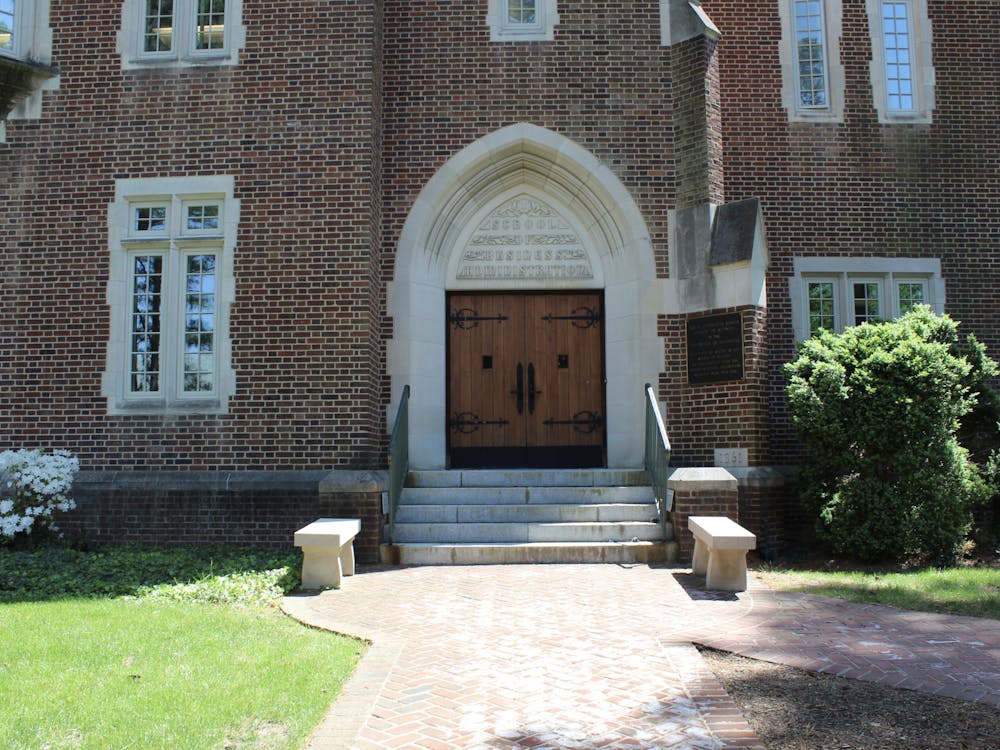It may not look very different, but the Blackboard Learning System was upgraded during winter break.
The new version, Blackboard 8, has new capabilities and provides a preview of a transition to Web 2.0 technology for both the University of Richmond and the Blackboard company.
"The recent upgrade was not so much glamorous," said Fred Hagemeister, coordinator of Academic Technology Services. "Really, Blackboard's best features are yet coming."
Users will notice the upgrade most in the Communication Tools section. The Discussion Board has been improved to allow students to comment on each others' posts. Students can now rate each other's posts so that the better and more popular contributions can be more widely read, allowing students to make better use of their time reading other student contributions and encouraging better responses overall.
Students can also grade a classmate's submission, allowing for more interactive self and peer assessment. The "Collaboration" page offers virtual classrooms, online chats with instructors during office hours and work-flows for group work. If the instructor chooses, Blackboard Scholar can assist with individual and group research projects helping with the actual searching and even citations by using new tools such as bookmarks.
Eventually, the Discussion Board will become more like a blog and the use of "wikis" will allow students to modify shared content, as is done on the popular Web site Wikipedia.
Using Web 2.0 and social-networking technologies, instructors can allow more frequent peer interaction in and out of class, creating a community-based learning environments. Consistent and widespread use of these technologies will help Richmond students become more adept users of developing and increasingly popular technologies.
"Of course, this is all up to the teachers to choose to use these features," Hagemeister said. "I really hope that the new features will be used more."
He said he hoped these tools would encourage traditionally individualized learning environments to explore new ways of communication. But even if the new communications tools don't fit with a course, instructors will find the new Grade Center an improvement from the unpopular Grade Book.
This element of the upgrade is much more than a name change. According to Hagemeister, most instructors had been opting for Microsoft Excel's spreadsheets because the old version had rigid and limited functions. Blackboard 8's Grade Center offers extensive flexibility from extra credit to granting exceptions to dropping the lowest quiz score and more helpful features than the formula-oriented Excel spreadsheet.
"Before, it couldn't handle 'exceptions to the rule' kind of grading," Hagemeister said. "Now, Grade Center can and makes the instructor's assessments available to the students instantaneously."
But Blackboard is not the only software offering these features. Other systems are popular in "open source" development communities where the software's code, or its design, is available to others to modify and improve its features. This lends the systems to the most recent innovations such as wiki's, blog-like discussion boards and other collaboration tools. Instructors, sprinkled throughout the university's schools, have been opting for these systems instead of Blackboard and making their students a part of the experiment.
Enjoy what you're reading?
Signup for our newsletter
One such faculty member is Joe Essid Jr., director of the Writing Center. Essid is a proponent of open source development and not a fan of Blackboard's closed information system.
"I won't use it," Essid said. "As a writing instructor, I need to be able to share my material, my syllabus, with the writing community."
After learning about Blackboard 8's move to incorporate Web 2.0 technologies, Essid said that while the ability to share material was still important for his work, he was encouraged by the change. For Essid, making these technologies a part of the course is a great benefit to the students because wikis and blogs are how people communicate today.
Another instructor who has tried out other systems out is Paul M. Birch, a computer services librarian at the T. C. Williams School of Law Library. Birch used Sakai in his Legal Research class and found more mixed reactions than Essid. For Birch, the system's advantages included functions such as allowing the instructor to see the student's view of a Sakai page, which respond to Blackboard's flaws. But he found aspects such as its navigation and the need for additional user names and passwords frustrating.
The concern that these technologies may cause confusion or distraction in courses is clearly present for some. For Essid, that cost pales in comparison to the benefit.
"Students' ease of use should not be the priority," Essid said. "Educational outcome should be and this technology is something students should use."
Even after switching back to Blackboard, Birch said, "I think it's a really positive thing that Blackboard alternatives exist, especially open-source ones."
Speaking from the university's perspective, Hagemeister said, "Although we have no intention to drop Blackboard from UR's course tools, we have made the alternatives available and that is what is really important."
Before next fall, the Technology and Learning Center plans to upgrade again.
Contact reporter Amelie LeBreton at amelie.lebreton@richmond.edu
Support independent student media
You can make a tax-deductible donation by clicking the button below, which takes you to our secure PayPal account. The page is set up to receive contributions in whatever amount you designate. We look forward to using the money we raise to further our mission of providing honest and accurate information to students, faculty, staff, alumni and others in the general public.
Donate Now


